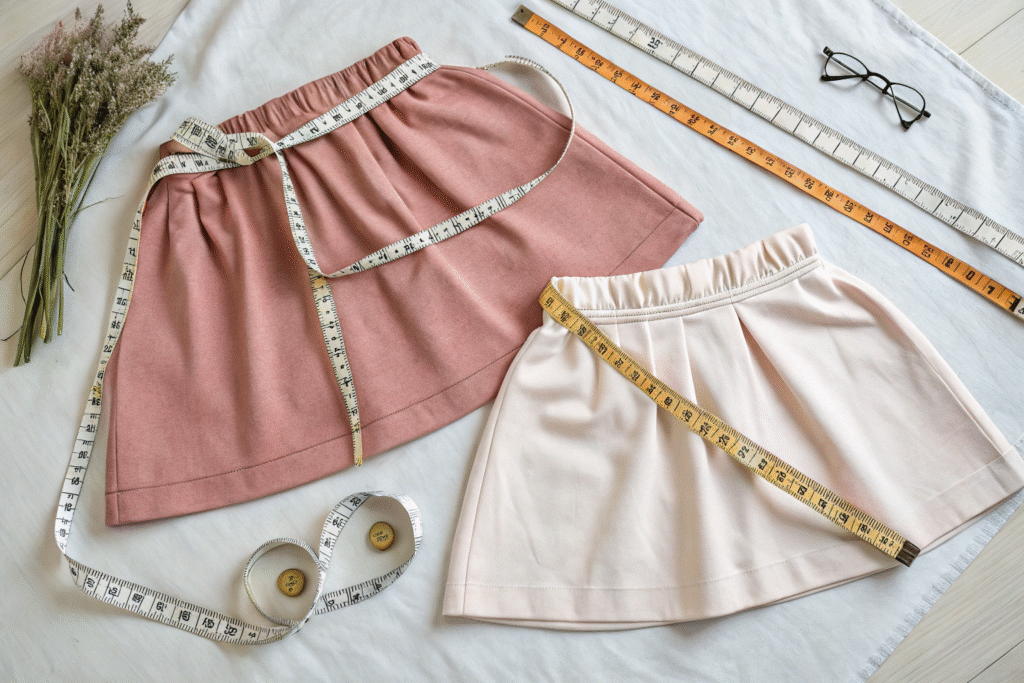When sourcing children’s clothing, one common buyer question—especially from brand owners who also serve petite women—is: what does a kids’ size 14/16 translate to in adult women’s sizing? It may seem like a minor detail, but when rebranding or upsizing kidswear for crossover markets, these conversions matter.
A children’s size 14/16 typically fits like a women’s size XS or S, depending on the style, brand, and stretchability of the garment. Many U.S. and European petite consumers find size 14/16 garments from youth collections suitable for casual wear, especially when the cut is unisex or relaxed.
If you’re buying for resale, or for multifunctional sizing markets, understanding the measurement comparison and fit limitations of this size bridge can improve returns and customer satisfaction.
Is a kid’s 14/16 size the same as women’s XS?
While a size 14/16 in children’s clothing may appear close to women’s XS on paper, the fit is not always identical. The cut and proportion differ in areas such as the bust, hips, and garment length. Youth sizes are designed with flatter torsos and narrower shoulders in mind.
In most cases, a child’s 14/16 size is closest to a women’s XS or possibly a size 0–2, depending on the brand. Here’s a quick snapshot:
| Size | Bust (inches) | Waist (inches) | Hips (inches) |
|---|---|---|---|
| Kids 14 | 32" | 26" | 34" |
| Kids 16 | 33"–34" | 27"–28" | 35"–36" |
| Women XS | 32"–33.5" | 24"–26" | 34"–35" |

Which types of clothes translate best in size?
Not all garments adapt equally across categories. Items like T-shirts, hoodies, elastic-waist pants, or leggings offer the most seamless crossover due to their stretch and relaxed fits.
What fit issues commonly arise?
Garments often fall short—literally. Sleeve lengths, torso drop, and hip cuts may be too short or tight in areas where adult bodies naturally curve more. Buyers should test fit on real adult models before launching such crossover SKUs.
Can petite women wear size 14/16 in kids?
The short answer is yes—many petite women do. In fact, some even prefer kids’ sizes for the price, simpler styles, and availability in casualwear or outerwear. From a B2B standpoint, this presents interesting crossover selling opportunities for suppliers.
For women under 5’2” and weighing below 110 lbs, a 14/16 kid size may offer a better torso and waist fit than some adult sizes—especially in garments that don’t require tailored shaping.

What styles work best for crossover buyers?
Hoodies, sweatshirts, pajamas, basic tees, and even lightweight jackets. Buyers should avoid highly contoured dresses or trousers unless designed for flexible fit.
How does this affect resale value?
Many U.S. resellers tag these pieces as “petite-friendly” or “youth XL = women XS” to boost findability. With the right packaging and clear sizing info, these crossover garments can attract a dual market.
How do measurements compare between kids and women’s sizes?
When comparing sizing data for kids’ and women’s garments, it’s essential to look beyond the number and focus on actual inches or centimeters.
Women’s sizes are not only larger, but they are also shaped differently. A 33-inch bust measurement on a child’s garment will not curve or accommodate the same chest depth as a woman’s size with the same bust line.
| Garment Part | Kids 14/16 | Women XS |
|---|---|---|
| Sleeve Length | Shorter | Longer |
| Hip Curve | Straight | Curved |
| Rise Height | Lower | Higher |
| Inseam | Short | Standard |

How can I measure kids’ clothes for adults?
Lay the garment flat and measure bust, waist, hip width, sleeve length, and total garment length. Compare with adult measurement charts—not just size labels.
What to avoid when converting sizes?
Avoid assuming that number-based sizes align across markets. A size “16” in kids has nothing to do with a size “16” in women’s. Stick to inch/cm measurements for reliability.
When should you switch from kids to women’s sizes?
This is a frequent question from buyers serving both tween and teen segments. The transition from kids to adult sizes happens at different stages depending on body development and product function.
Generally, once a consumer’s height exceeds 5’3” or bust exceeds 34”, it’s better to move to women’s sizes. Not doing so may result in garments that are too short, tight, or awkward in fit.

Is there a universal sizing guide?
Unfortunately, no. Each brand uses proprietary fit charts. But U.S. and European brands generally start women’s XS at a 32–33” bust, 25–26” waist, and 34” hip.
What’s the best strategy for tween-focused buyers?
Offer extended youth sizes (like 18/20) alongside junior women’s XS–S with similar designs. This enables customers to transition without visual disruption in product design.
Conclusion
Children’s size 14/16 stands on a unique threshold—it bridges upper youth sizing and petite adult fashion. While technically considered “child” size, it overlaps significantly with women’s XS in measurements. However, buyers must factor in proportion, curve, and garment use when converting these sizes across markets.
For brands sourcing from China or Asia, understanding these size breakpoints can help you offer crossover collections, reduce return rates, and target a wider audience without increasing SKU complexity.
When in doubt, always confirm with physical samples and factory-provided spec sheets. At Fumao Clothing, we’ve helped many of our U.S. buyers fine-tune youth-to-women crossover designs to expand their markets.










